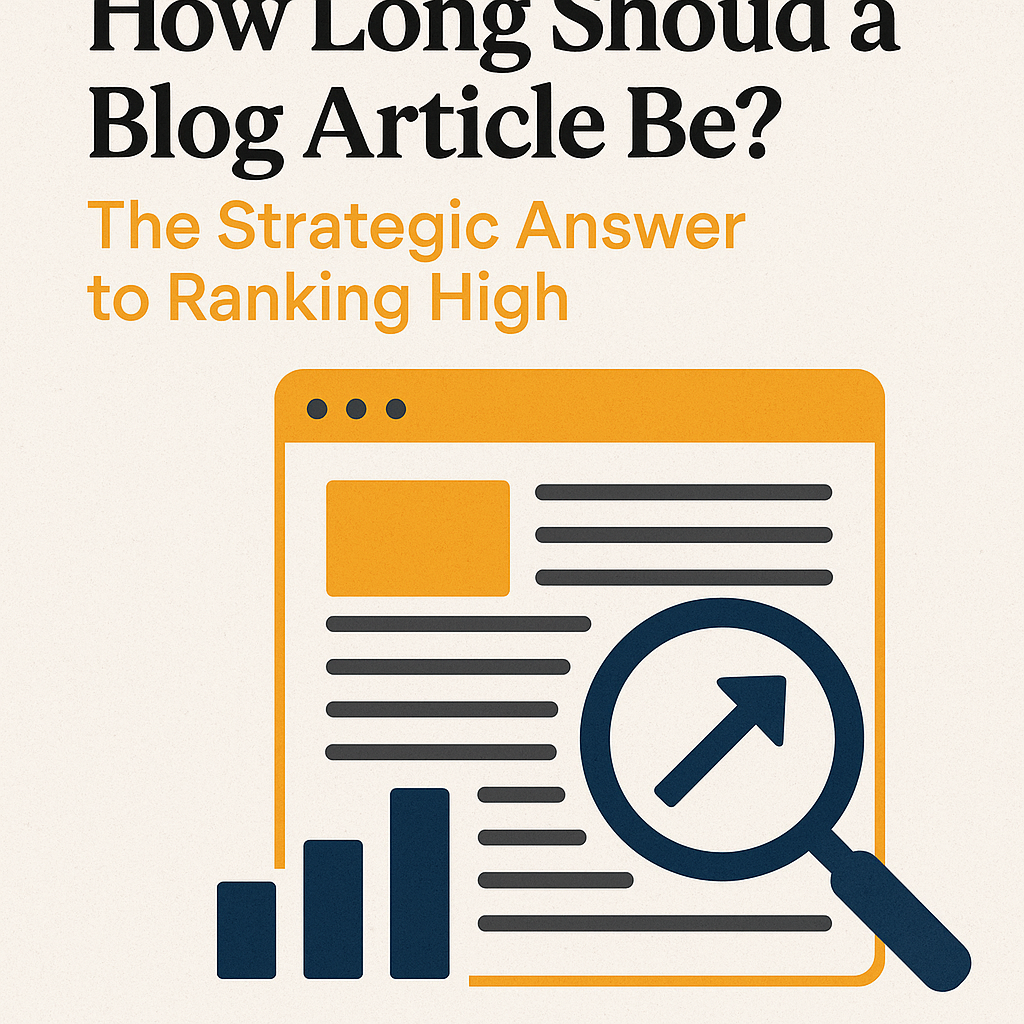In an age of information overload, attention spans are shorter—but paradoxically, search engines love long-form content. So, how long should your blog articles be if your goal is to rank high on Google?
Spoiler alert: There’s no one-size-fits-all answer. However, there is a strategic sweet spot based on content purpose, competition, and search intent. In the realm of SEO optimization services, understanding the ideal blog length is a foundational component of successful content strategy. Combined with effective on-page SEO strategies and complementary off-page SEO solutions, the right word count can drastically improve your visibility and traffic.
Let’s dive into what the data—and the experts—actually say.
What Studies Say About Blog Length?
Numerous studies have analyzed the relationship between blog length and Google rankings. Here’s what the latest data reveals:
- Writesonic (2025): Blog posts that rank on page 1 have an average length of 1,400–2,500 words, with content around 2,100 words performing best for SEO.
- Neil Patel: Long-form content (over 2,000 words) gets 77% more backlinks and 56% more shares than short-form.
- SEO.com: For competitive industries, blogs exceeding 2,000+ words often dominate the top 5 search results.
- WordStream: The most shared blog posts average between 1,500 and 2,000 words, depending on industry and topic.
Takeaway: While quality always trumps quantity, longer posts typically offer more comprehensive information, improved keyword targeting, and better opportunities for internal linking—all crucial for SEO.
Why Longer Blog Posts Rank Higher (When Done Right)
1. Depth = Relevance
Google’s algorithm favors content that thoroughly answers the user’s query. A 500-word blog may skim the surface, but a 2,000-word post is more likely to address multiple angles, subtopics, and related questions.
2. More Keywords, Naturally
Longer posts allow more semantic keyword integration without resorting to keyword stuffing. This helps you rank for multiple variations of your focus keyword.
3. Enhanced Engagement Signals
If your content is structured well, users will spend more time on your page, mitigating bounce rates and increasing dwell time—two key engagement signals Google considers.
4. Linkability
Comprehensive guides are more likely to earn backlinks, which directly support your off-page SEO solutions by building domain authority.
When Shorter Blog Posts Work Best
Not all content needs to be a 2,000-word marathon. Short-form blogs (300–800 words) still have a place—especially when:
- Answering specific questions (e.g., FAQs, how-to’s)
- Covering breaking news or timely updates
- Posting high-frequency content, like announcements or curated roundups
These posts can still support SEO when backed by strong on-page SEO strategies such as optimized metadata, internal linking, schema markup, and mobile-first formatting.
How to Determine the Right Length for Your Blog
Let’s break it down by content type and intent:
| Blog Type | Ideal Length | Purpose |
| Pillar Pages / Ultimate Guides | 2,000–3,500 words | Rank for high-volume, competitive keywords |
| How-to / Tutorials | 1,200–2,000 words | Detailed step-by-step instructions |
| Thought Leadership / Opinion | 1,000–1,500 words | Showcase expertise, drive engagement |
| Product/Service Pages | 700–1,200 words | Inform and convert |
| FAQs / Short Updates | 300–800 words | Quick answers and updates |
Use competitor research: Google your topic and analyze the average length of top-ranking posts. Your goal is to match—or exceed—the depth they offer without adding fluff.
Structuring Long-Form Content for Maximum Impact
Long posts can become overwhelming if not formatted properly. Here’s how to make yours digestible and engaging:
Use Subheadings (H2, H3, H4)
Break content into logical sections so readers can scan or jump to what they need.
Incorporate Visuals
Infographics, images, charts, and videos break up text and boost comprehension.
Optimize for Mobile
Responsive website design is a must. Mobile-friendly formatting reduces bounce rates and improves ranking potential.
Add Internal Links
Boost engagement and page views by linking to related articles, products, or resources on your site.
CTA Placement
Include relevant Calls-to-Action to guide readers toward your conversion goals (newsletter, contact form, download, etc.).
Keyword Strategy: Pairing Length with SEO
Long-form content offers more room to target:
- Primary Keywords
- Long-Tail Keywords
- LSI (Latent Semantic Indexing) Keywords
Use tools like SurferSEO, SEMrush, or Clearscope to analyze keyword gaps and match searcher intent.
But don’t forget: without proper on-page SEO strategies—like optimized title tags, meta descriptions, and schema markup—your masterpiece may never be seen.
Promoting Your Blog with Off-Page SEO Solutions
Even the most well-written, SEO-optimized blog needs external signals to perform.
Use These Tactics:
- Backlink Outreach: Get your blog cited by relevant websites through guest posting or direct outreach.
- Social Sharing: Promote your post on LinkedIn, Twitter, and niche communities.
- Influencer Collaborations: Invite experts to contribute quotes or co-promote your post.
- Syndication: Republish content on platforms like Medium, LinkedIn Articles, or Flipboard (with canonical tags).
These off-page SEO solutions build credibility, drive referral traffic, and enhance your site’s authority over time.
How Blog Length Affects Ranking Timeline
Blog length also plays a role in how fast you rank:
- Short posts (under 1,000 words) may index quickly but struggle for high rankings.
- Mid-length posts (1,200–1,800 words) often see traction within 2–4 weeks.
- Long-form content (2,000+ words), when optimized and promoted, can take 4–8 weeks to climb SERPs—but tends to stay there longer and attract more backlinks.
Pair your publishing efforts with consistent analytics tracking (Google Analytics, Search Console) to measure performance and refine strategy.
Final Thoughts: It’s Not Just About Word Count
While length is important, quality, intent, and user experience matter more. A well-researched 1,500-word article with rich insights and clean formatting will outperform a 3,000-word post filled with fluff.
At SpeedDot360, our SEO optimization services are designed to find the perfect balance between content depth, keyword relevance, and conversion strategy. Whether you’re creating blog content for awareness, authority, or lead generation, we help you structure and scale your efforts to perform.
FAQs
1. Is 500 words too short for a blog post?
Yes—for most SEO purposes. While it can work for quick updates or FAQs, longer posts perform better for competitive keywords.
2. Can blog posts be too long?
Only if they’re not valuable, if your content is repetitive or lacks focus, readers (and Google) will tune out. Stick to relevance.
3. What’s the ideal blog frequency for SEO?
Publishing 2–4 high-quality posts per month is a good baseline. Consistency matters more than quantity.
4. How do I promote long-form blog posts?
Use a mix of email, social sharing, backlink outreach, and syndication. Combine with off-page SEO solutions to amplify reach.
5. Should every blog be 2,000+ words?
No. Let the topic and competition guide your length. Use data, not guesswork, to determine the ideal structure.





